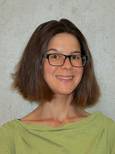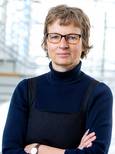Main content
Top content
B5 The multilingual hospital. The Production of Migration through Language as Com-municative and Social Infrastructure
Dr. Nantke Pecht

Postdoctoral Researcher
Linguistics
University of Münster
Office in Osnabrück: 03/E21
Details
The project investigates how German as a lingua franca is shaped through daily professional interaction by a multilingual community of practice. Analyses of language structure and change will be coupled with studies targeting the social interpretation of linguistic diversity. The aim is to understand the contribution of language to the production of migration-related meaning in an exemplary section of a migration society. Data will be collected from the multilingual nursing staff at a hospital ward in which long-established staff members collaborate with recently recruited staff members from abroad. We expect a high degree of linguistic diversity and dynamism, as the lingua franca of the team is the first language (L1) or part of an established multilingual repertoire (L2/1) for some, and a developing foreign or second language (L2) for others.
Linguistic diversity can affect both the function of language as a communication tool and as an infrastructure for signalling social characteristics such as belonging, difference, professional legitimacy, etc. The project is dedicated to both aspects and focusses on speakers with all three language profiles (L1, L2/1, L2). Study 1 will address the structure and function of L2 varieties; study 2 will analyse the interactive use and development of the lingua franca repertoire; study 3 concentrates on the participants’ subjective theories on language-related social meaning; and study 4 is devoted to external speakers’ language attitudes towards L2 varieties in professional contexts.
Three of the studies have a longitudinal design. This allows us to describe the development of language as a communicative and social infrastructure and to find out whether its contribution to the production of migration-related meaning increases or decreases over time. The gradual emergence of shared (and potentially idiosyncratic) linguistic features in the multilingual community of practice (study 2) will be investigated in parallel with changes in the speakers’ interpretation of their linguistic environment (study 3). These investigations are complemented by a more controlled collection of L2 language production data (study 1). As a comparatively stable variable, the language attitudes of speakers that do not belong to the work team will be measured (study 4).


